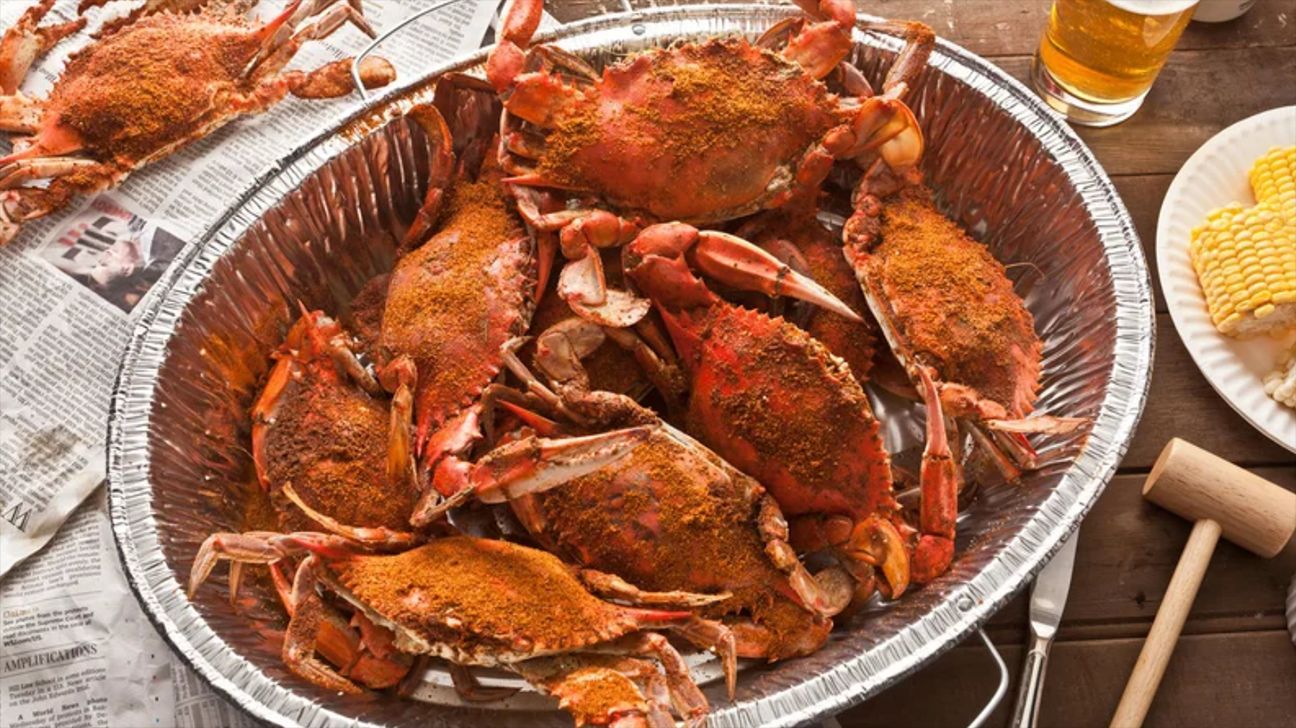Have you ever been intimidated shopping for crab at the grocery store, or cooking it at home? It happens to me all the time. Which is why I decided enough is enough, and gave myself a tutorial on the types of crab I’m likely to find (turns out there’s a wide variety), and how to cook them. Why? Because crab is delicious.
By and large, I’ve learned I’m not going to encounter fresh (read: live) crab in my grocery store. If you do, or have a “seafood guy,” more power to you! What this means is that I’m looking at picked, pre-cooked, and preserved options for all crab varieties. That’s okay! After all, I don’t want to mess around with bad, raw seafood. As a matter of fact, if the crab you encounter at the grocery store is not either alive (moves when you touch it, alive), or picked, pre-cooked, and preserved, don’t mess with it. Raw and lethargic? Leave it alone. Raw and dead? Don’t do it! Also, if it looks or smells funky, pass on that piece and go for another one. Now that we have that out of the way, onto the crab!
Scientific name: Callinectes sapidus
Also known as: Chesapeake blue crab
Harvest season: April to December
Blue crab is native to the mid-Atlantic, and Gulf regions of the United States. It’s a significant source of food and/or commerce for the eastern shore of Maryland, as well as in Virginia, North Carolina, Louisiana, and New Jersey. When you are eating out and you hear the term “jumbo lump crab meat” you’re likely getting full pieces of blue crab. You can cook these by themselves, or, they’re great in crab cakes, soups (a traditional use for the small female specimens), or even a crab Oscar preparation. For an old-style dish, try this Crab Imperial recipe.
Scientific name: Callinectes sapidus
Also known as: Softies
Harvest season: May to September
Notice anything peculiar here? Check out the scientific name. It’s the same as the blue crab, above. That’s because soft-shell crabs are just blue crabs in their molted state. That means their old shells have shed, and their new shells haven’t formed and hardened yet! What sets these babies apart in the kitchen is you prepare the whole thing for consumption. They’re great battered and fried. Try this Fried Soft Shell Crab recipe.
Scientific name: Menippe mercenaria
Also known as: Florida stone crab
Harvest season: Mid-October to mid-May
The stone crab is native to a part of the Atlantic Ocean spreading from the northeast region of the United States, all the way down to Central America. It can also be found in parts of the Gulf of Mexico, and salt water marsh areas of the southeastern United States (most notably South Carolina and Georgia). Much of the stone crab that’s consumed in the United States comes from the Gulf. Interestingly, stone crabs are consumed for their claws because there’s not much to the rest of them. The claws, though, can be quite large and meaty. Moreover, because of this, fisheries look to declaw the crabs (either singular or dual removal) and return them to the ocean. Some crabs even grow their claws back. The best way to enjoy some cooked claws is with a mustard sauce made famous by Joe’s Stone Crab.
Scientific name: Metacarcinus magister
Also known as: Cancer magister
Harvest season: December to July (predominantly late fall through winter)
The Dungeness crab makes its home off the west coast of North America, primarily from Alaska to California (and sometimes Mexico). If you’re not on the east coast, and you’re looking for a tender, sweet option, steamed Dungeness crabs are a great bet. It also works well for bisques. Try this Dungeness Crab Bisque recipe.
Scientific name: Chionoecetes opilio
Harvest season: April to November
Snow crabs are harvested from (duh) cold waters in the northern Pacific and Atlantic. So, a lot of the snow crab we enjoy today comes from Canada. A lot of folks like to eat the legs steamed, boiled, or baked, with a little drawn butter. Other folks like to fry snow crab legs. But if you’re up for something a little bit more adventurous, check out this Crab Fries with Garlic Aioli recipe.
Scientific name: Paralithodes camtschaticus
Also known as: Red king crab
Harvest season: October to January
The granddaddy of them all! When you want decadent, rich, buttery, tender, sweet seafood for a special occasion, you can’t go wrong with king crab. They come from Alaska and Russia, and fishing for them is known to be particularly dangerous work. They’re also one of the largest species of edible crab, with shells sometimes spanning 11 inches (and a leg span of 6 feet)! For my money, pound for pound (and king crabs can weigh up to 10 pounds each), I’d go with Alaskan red king crab legs over lobster tail any day. For simply steamed legs, try this King Crab Leg recipe.
After this exploration, I feel a lot more comfortable navigating the seafood counter at my local grocery store, and think I could actually give crab a shot. Hopefully, if you like crab, you feel the same.

